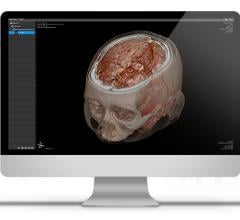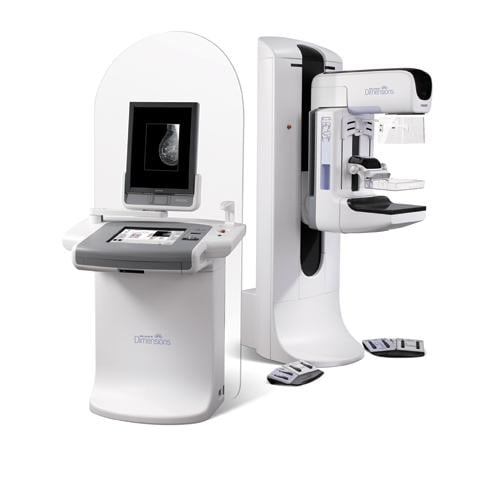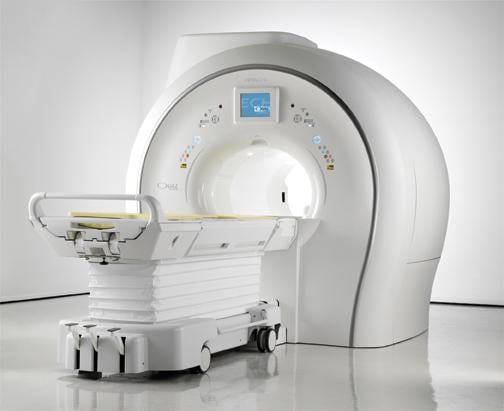GE Healthcare announced the U.S. Food and Drug Administration (FDA) approval of a new indication for AdreView (Iobenguane I 123 Injection), the first and only FDA approved molecular imaging agent to link nerve function in the heart to a patient’s mortality risk.[1] AdreView is approved for the scintigraphic assessment of myocardial sympathetic innervation (cardiac nerve activity) to assist in the evaluation of patients with New York Heart Association (NYHA) Class II or Class III heart failure and left ventricular ejection fraction (LVEF) ? 35 percent.[2]
Network security issues, vital infrastructure upgrades, electronic health record (EHR) implementation and impending federal deadlines will guide priorities this year, according to an independent research study of 100 healthcare provider CIOs and senior IT executives that was commissioned by Level 3 Communications Inc.
Carestream was awarded 43 patents from the U.S. Patent and Trademark Office in 2012 for innovations in radiology imaging, healthcare IT, dental imaging and other areas, capping another strong year for technology development across its businesses. These new patents include: improvements in digital radiography detectors; advanced image processing techniques for digital radiography, mammography exams and specialty applications; and medical imaging advancements for use in intensive care units, orthopedics and mobile X-ray systems.
While most women understand the importance of health screenings, an estimated 72 million have missed or postponed a ...
Merge Healthcare Incorporated featured its iConnect Clinical Enterprise Platform at the HIMSS13 Interoperability Showcase and in Merge's booth at this year's HIMSS conference in New Orleans.
Guerbet announced that the U.S. Food and Drug Administration (FDA) has approved Dotarem (gadoterate meglumine), a gadolinium-based contrast agent (GBCA) indicated for intravenous use with magnetic resonance imaging (MRI) in brain (intracranial), spine and associated tissues in adult and pediatric patients (2 years of age and older) to detect and visualize areas with disruption of the blood brain barrier (BBB) and/or abnormal vascularity.

SPONSORED CONTENT — Fujifilm’s latest CT technology brings exceptional image quality to a compact and user- and patient ...
Carestream announced new measurement tools for chiropractic professionals that make its computer radiography (CR) systems with acquisition/mini-PACS (picture archive and communications system) software an even more attractive and efficient digital image capture and management solution. These systems can be purchased from Carestream or through their authorized Carestream dealers.
Fujifilm’s APERTO Lucent is a 0.4T mid-field, open MRI system addressing today’s capability and image quality needs ...
Calgary Scientific Inc. has entered into a partnership with Clinisys, to develop electronic medical record (EMR) solutions for healthcare practitioners. The agreement between the two Alberta-based companies will see Calgary Scientific’s Health Canada and U.S. Food and Drug Administration (FDA) diagnostically-cleared medical imaging solution, ResolutionMD, integrated into Clinisys’s cloud-based EMR solution. The integration of powerful visualization, collaboration and mobile tools with the patient record helps clinics to realize many benefits including high quality diagnostics and improved workflows, resulting in a complete circle of care for healthcare practitioners and their patients.
From athletes to individuals suffering from osteoporosis, bone fractures are usually the result of tiny cracks accumulating over time — invisible rivulets of damage that, when coalesced, lead to that painful break.
Northwest Community Healthcare (NCH) is unveiling new imaging and lab results functionality for its mobile app, MyNCH, which allows NCH Medical Group patients to view their lab and imaging results with just the tap of a finger on their smartphone.
SPONSORED CONTENT — Fujifilm’s latest CT technology brings exceptional image quality to a compact and user- and patient ...
For many years mammographers have been saddled with low reimbursements. Recognizing this, women’s health advocates lobbied successfully last decade for higher rates for mammograms produced with digital equipment.
United Medical Center (UMC) is a non-profit, full-service community hospital serving Southeast Washington, D.C. and nearby Maryland communities. Though rich in African-American heritage, the community faces many economic challenges.
In an era of healthcare reform and a push to meet appropriate use guidelines for tests, imaging and therapy amid declining reimbursements, there has been much discussion about implementation of clinical decision support (CDS) software. There is apprehension by some physicians who view CDS as technology telling doctors how to practice medicine. There are others in healthcare who are concerned about adding cost with the implementation of this software and how it will be updated based on the most current clinical data and practice guidelines. However, if implemented in a way where it is integrated with workflow and accepted by the physicians and hospital leadership, CDS has helped some hospitals meet appropriate use criteria and reduce unnecessary tests, which in turn helped reduce healthcare costs.
SPONSORED CONTENT — EnsightTM 2.0 is the newest version of Enlitic’s data standardization software framework. Ensight is ...
The benefits of computer-aided detection (CAD) for mammography images can be a polarizing topic for many radiologists. The technology has proven to be beneficial in detecting breast calcifications, and today’s CAD software has nearly perfect accuracy in detecting these calcifications. The software has also been noted to help inexperienced radiologists with detecting suspicious areas of breast tissue that may require special attention. However, CAD has not yet proven to be as accurate in its detection of tumors, and for radiologists with a more experienced eye, the software has not made itself as useful. CAD developers are making specific changes to the software that allows for increased visual clarity, context and medical history to make this technology more effective for radiologists across the board.
Just weeks after implementing 3D mammography (breast tomosynthesis) in their practice, radiologists at Weinstein Imaging Associates found breast cancers in three patients that were not seen on the 2D images and the entire staff became instant believers in the new technology.

SPONSORED CONTENT — EnsightTM 2.0 is the newest version of Enlitic’s data standardization software framework. Ensight is ...
As a result of routine mammography screening, approximately 1.6 million breast biopsies are performed annually to determine whether a suspicious lesion is malignant or benign. Of these 1.6 million biopsies, approximately 20 percent will result in a positive cancer diagnosis.[1] These numbers are staggering alone, and are just the statistics for one out of more than 200 types of cancers. As radiologists, we strive to provide our patients with the best medical care available, but what we do not always think about is what happens after a sample leaves our office. Errors that occur in the biopsy diagnostic process are specific diagnostic errors that imaging professionals must address.
Advances in digital mammography are evolving as clinicians look to improve breast cancer screening in women. In recent years, new technological trends have emerged; notably, the addition of 3-D breast imaging, or tomosynthesis, which was approved by the U.S. Food and Drug Administration (FDA) in 2011. But as technology improves, questions remain over the recommended frequency of screening for breast cancer.
For years, high cancer diagnosis rates and limited access to quality health services plagued the Navajo residents cared for by the Tséhootsooí Medical Center in Fort Defiance, Arizona.
Increasing research on women with dense breasts is having a positive effect on imaging modalities. It is estimated that between 30–40 percent of women in the United States have dense breasts. Because fatty breast tissue makes it difficult to identify breast tumors on standard mammography exams until very advanced stages, dense breasts are a strong independent factor for breast cancer. Research has shown that it is beneficial for this population of women to invest in additional imaging.
Defining disease processes by their cellular and molecular signatures has enabled molecular diagnosis and the development of targeted therapies, and advances in genomics offer promise for earlier disease detection and possibly molecular prevention. The field of molecular imaging is embracing these advances and is using a diverse set of molecular imaging strategies to interrogate disease states and physiology.
In early February, the Centers for Medicare and Medical Services (CMS) announced a final rule necessary to implement requirements laid out in the Affordable Care Act Sunshine Rule that will increase public disclosure of financial relationships between drug/device manufacturers, and physicians and teaching hospitals.


 March 22, 2013
March 22, 2013 















